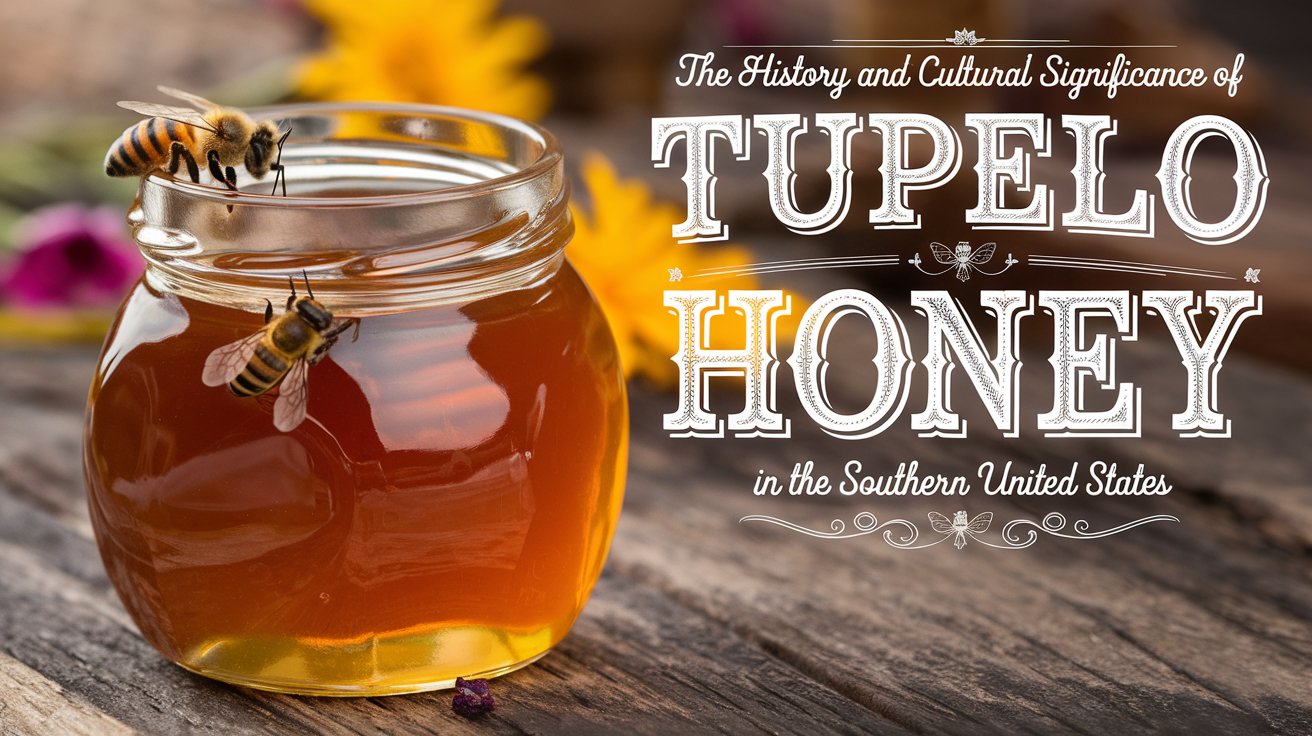Deep in the cypress swamps of Florida’s panhandle and southern Georgia, a rare golden elixir known as honey tupelo has been captivating taste buds and shaping local culture for generations. This remarkable honey, produced during a fleeting spring bloom, represents more than just a sweet treat – it embodies the heritage, perseverance, and natural bounty of the American South.
The Origins of Liquid Gold
Long before European settlers arrived in North America, indigenous tribes recognized the value of the tupelo tree and its sweet nectar. The story of commercial tupelo honey production began in 1872 when the first major beekeeping operation established roots near Daytona, Florida. However, it was S.S. Alderman’s ambitious venture in Wewahitchka in 1898 that truly launched the industry. Alderman’s success with 1,300 colonies in orange groves and 2,500 in swamps sparked a movement, drawing other beekeepers to the region’s rich potential.
Natural Habitat and Geographic Significance
The production of genuine honey tupelo occurs in a remarkably specific geographical area, primarily centered around:
- The Apalachicola River basin in Florida’s panhandle
- The Okeefenokee Wildlife Refuge along the Georgia-Florida border
- The wetlands surrounding the Ochlockonee River
These areas form part of the Southern Cypress Swamp ecosystem, where white Ogeechee tupelo trees (Nyssa ogeche) thrive along the riverbanks and in remote wetlands.
The Art of Harvesting Nature’s Gold
Traditional Harvesting Methods
The process of harvesting honey tupelo remains largely unchanged over generations, requiring exceptional skill and perfect timing. Beekeepers must navigate their boats through winding waterways, often in challenging conditions, to position their hives at precisely the right moment. This delicate dance with nature occurs during the brief blooming period of tupelo trees, typically lasting only 2-3 weeks in April and May.
Production Challenges
Modern honey producers face numerous challenges in maintaining this traditional practice:
| Challenge | Impact |
| Weather Variability | Affects blooming patterns and bee activity |
| Access Difficulties | Remote locations require boat transportation |
| Short Season | Limited 2-3 week harvesting window |
| Climate Change | Unpredictable weather patterns affect production |
| Market Competition | Pressure from Imported Honey Products |
The Science Behind the Sweetness
What sets honey tupelo apart from other varieties goes beyond its unique harvesting location. The chemical composition of this golden nectar makes it truly special:
Unique Properties
The exceptional characteristics of honey tupelo stem from its high fructose content, which prevents crystallization – a feature that sets it apart from most other honey varieties. This natural composition results in several distinctive qualities:
- Light amber color with a subtle greenish cast
- Buttery, floral flavor profile with hints of pear
- Natural resistance to granulation
- Exceptional shelf stability
- Pure, unprocessed characteristics
Quality Standards
Authentic honey tupelo undergoes strict quality control measures. Professional beekeepers ensure their hives are cleaned of other honey varieties before the tupelo bloom begins. The honey must be harvested immediately after the blooming period to maintain its purity, and certified honey tupelo is never heated, processed, or filtered.
Cultural Impact and Heritage
Musical Legacy
Few agricultural products can claim to have inspired hit songs, yet Honey Tupelo achieved this distinction through Van Morrison’s celebrated 1971 album. The album’s title track helped introduce this Southern delicacy to a global audience, cementing its place in popular culture.
Literary and Film Influence
The mystique of Honey Tupelo has captured the imagination of countless writers, filmmakers, and artists. The 1997 film “Ulee’s Gold,” starring Peter Fonda, brought the world of honey production to the silver screen, earning critical acclaim and further popularizing this unique product.
Community Celebrations
The cultural significance of honey is perhaps best exemplified through local celebrations. The annual Honey Tupelo Festival in Wewahitchka, Florida, has been drawing visitors since 1941. These gatherings serve as both a celebration of local heritage and an important economic event for the region.
Economic Impact and Local Identity
Regional Economic Significance
For communities like Wewahitchka (affectionately known as “Wewa”), honey tupelo production represents more than just an industry – it’s a way of life. The honey trade has historically provided sustainable income for families in these rural areas, contributing significantly to local economies.
Modern Market Dynamics
Today’s honey market faces both challenges and opportunities:
- Premium pricing reflects limited production and high demand
- Competition from imported honey products
- Growing interest in artisanal and locally sourced foods
- Increased awareness of honey authenticity and origin
Environmental Concerns and Conservation
Current Challenges
The future of honey tupelo production faces several environmental challenges that require careful attention and proactive solutions:
The impact of agricultural chemicals and pesticides threatens both tupelo trees and bee populations. Urban development continues to encroach on natural habitats, while climate change affects the delicate balance required for successful honey production.
Conservation Efforts
Various initiatives work to protect this unique ecosystem:
- Habitat preservation programs
- Sustainable beekeeping practices
- Educational outreach efforts
- Water quality monitoring
- Local ordinances protecting tupelo trees
Where to Find Authentic Tupelo Honey
While fresh tupelo honey for purchase can be found in various outlets, ensuring authenticity requires careful consideration. Legitimate sources include:
- Local apiaries in Northwest Florida and South Georgia
- Certified beekeepers’ associations
- Established honey producers with proven track records
- Specialty food stores in the Southeast
- Reputable online retailers with verifiable sourcing
Conclusion
Tupelo honey stands as a testament to the delicate relationship between nature, tradition, and human enterprise. Its story intertwines with the history of the American South, representing both cultural heritage and environmental stewardship. As this golden treasure continues to captivate new generations, its preservation becomes increasingly important for both cultural and ecological reasons.
For years, Smiley Honey has been harvesting pure, raw honey tupelo from the pristine swamps of Northwest Florida. As stewards of this precious tradition, they maintain the highest standards of quality and authenticity. Every jar of our tupelo honey carries forward a legacy of craftsmanship, connecting consumers to the unique flavors and heritage of the Southern swamps. Get Yours Now!

